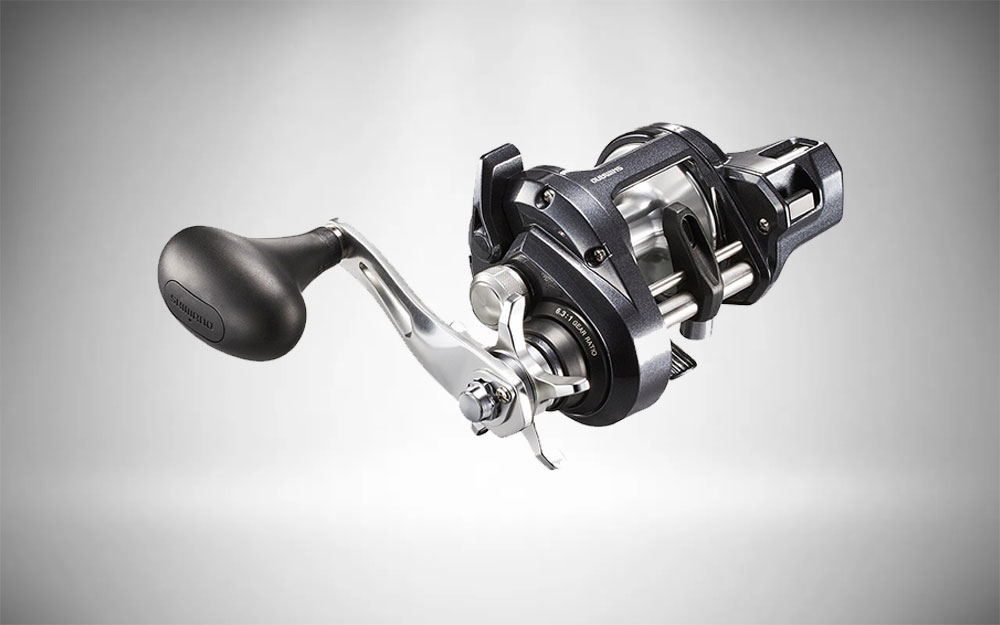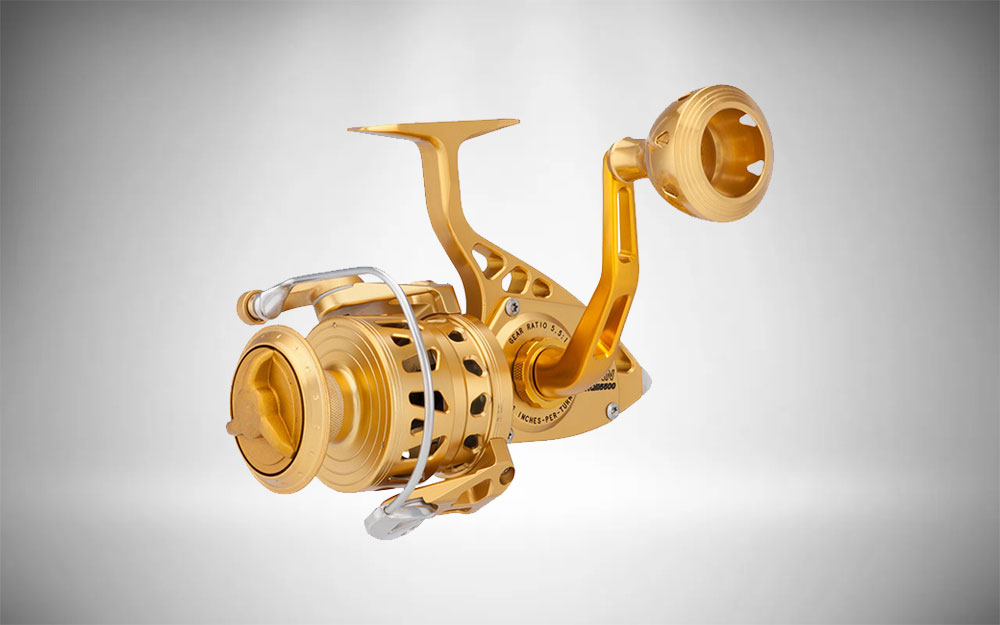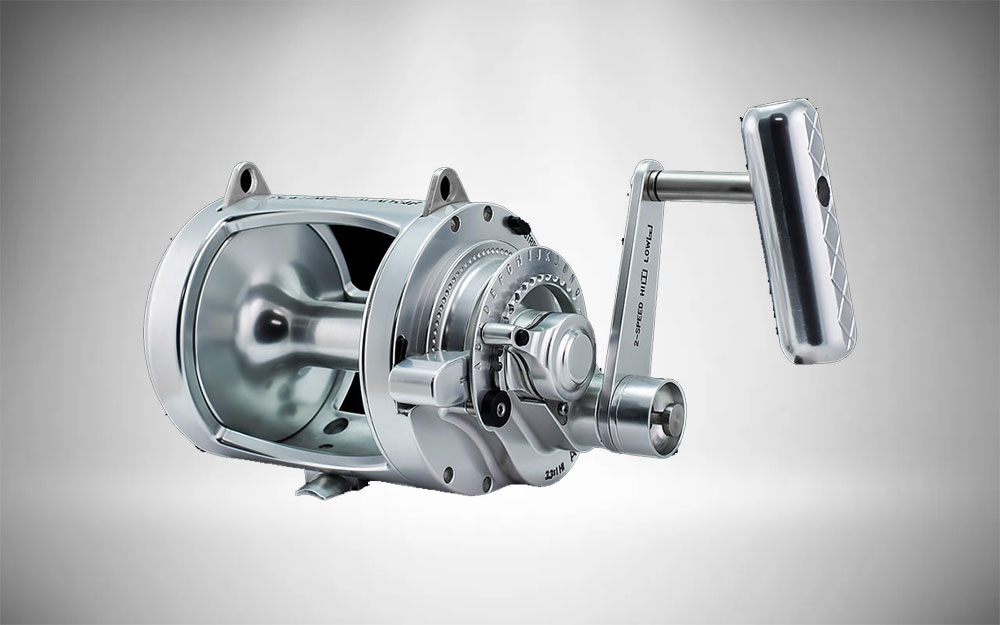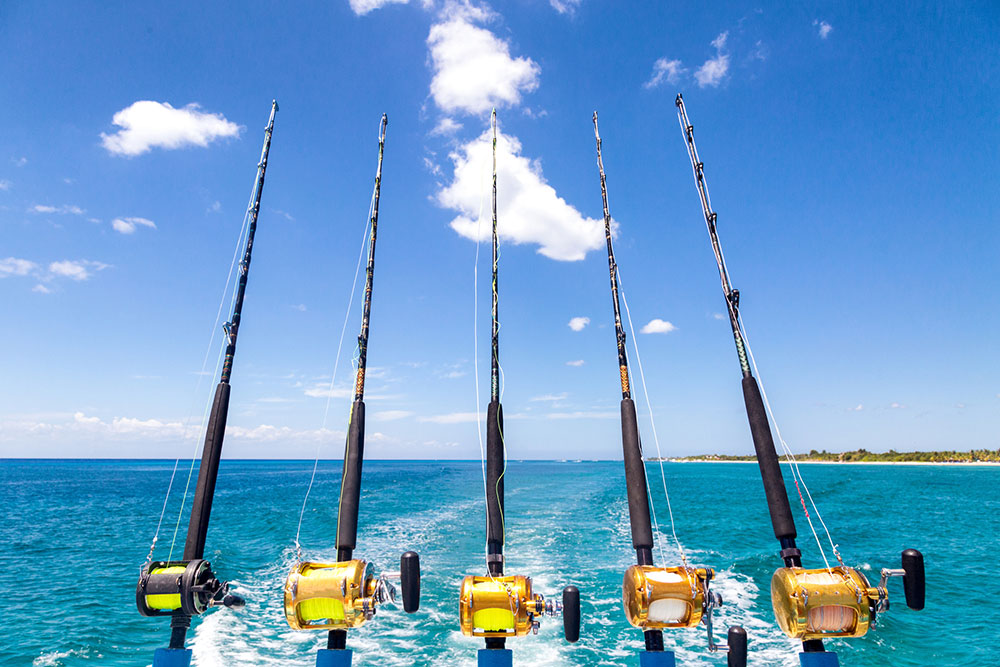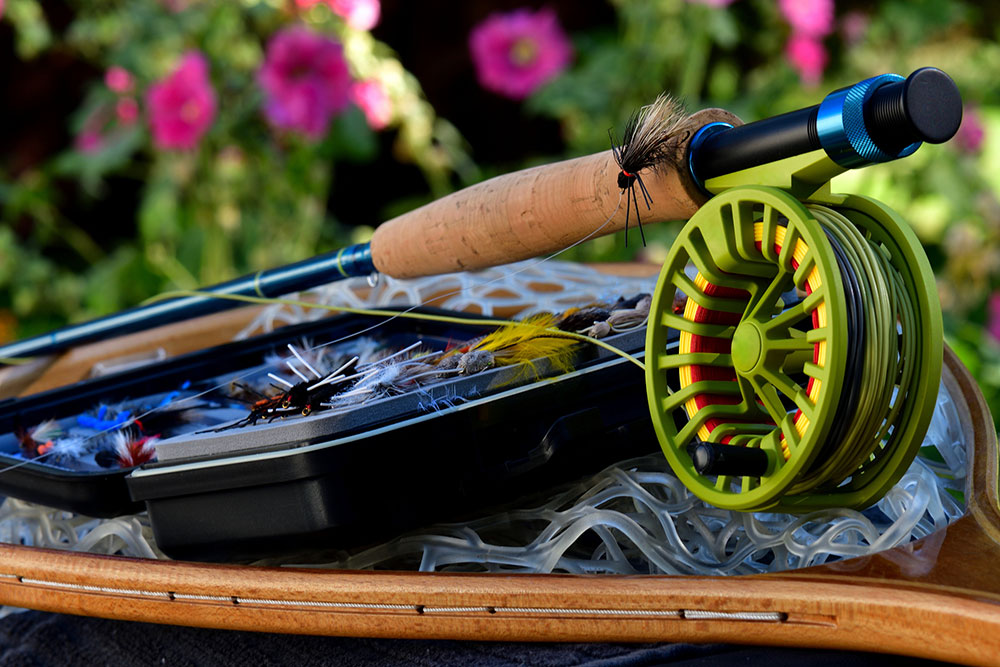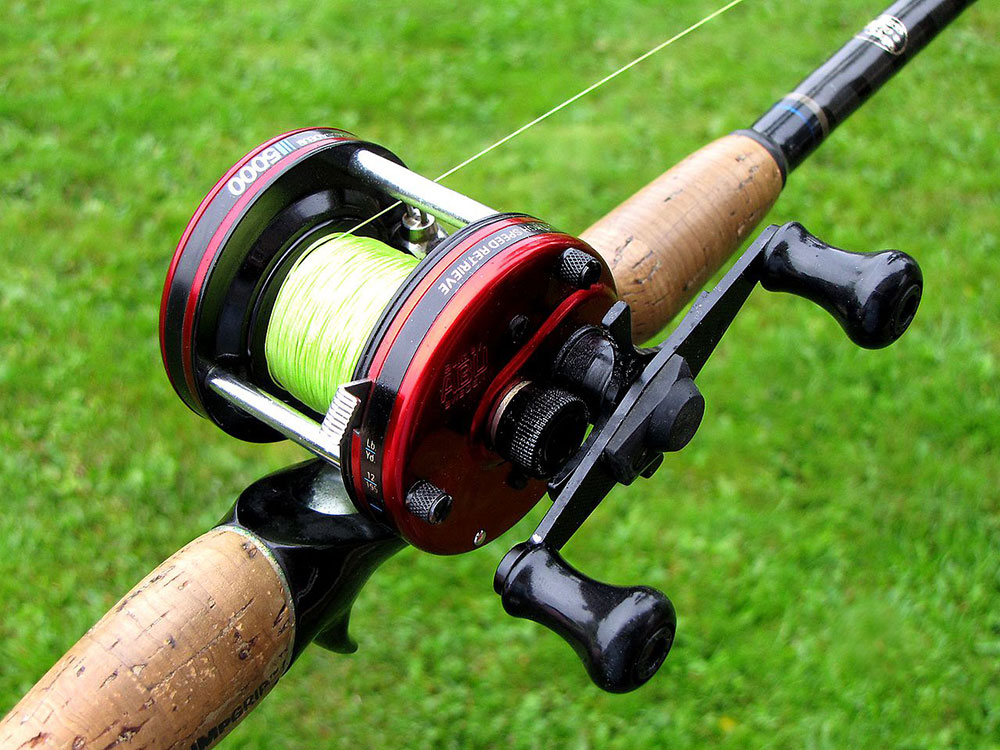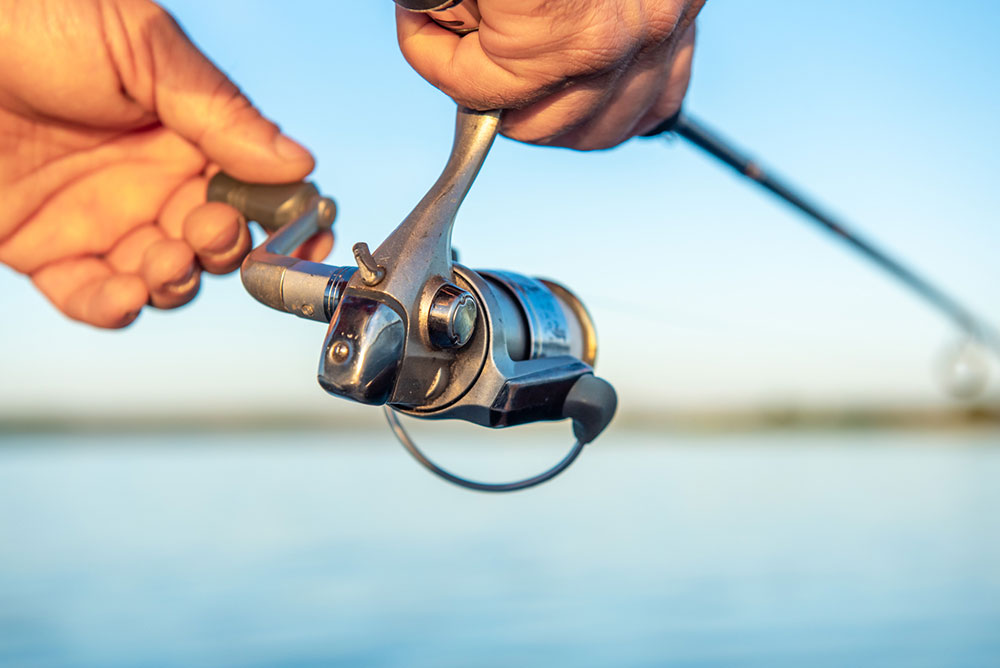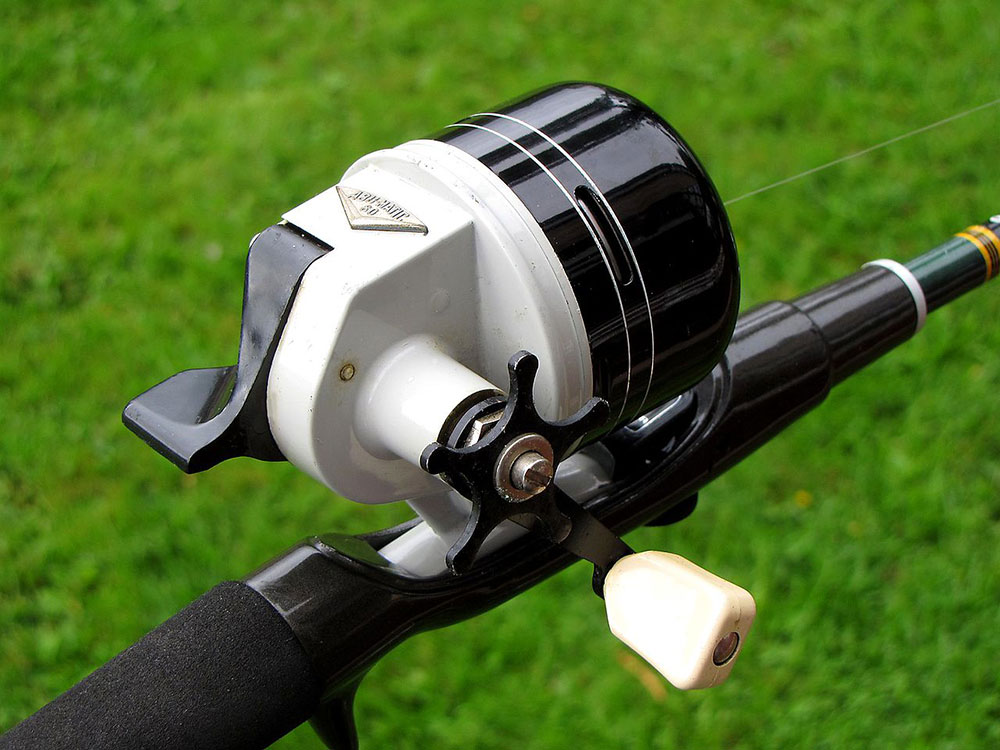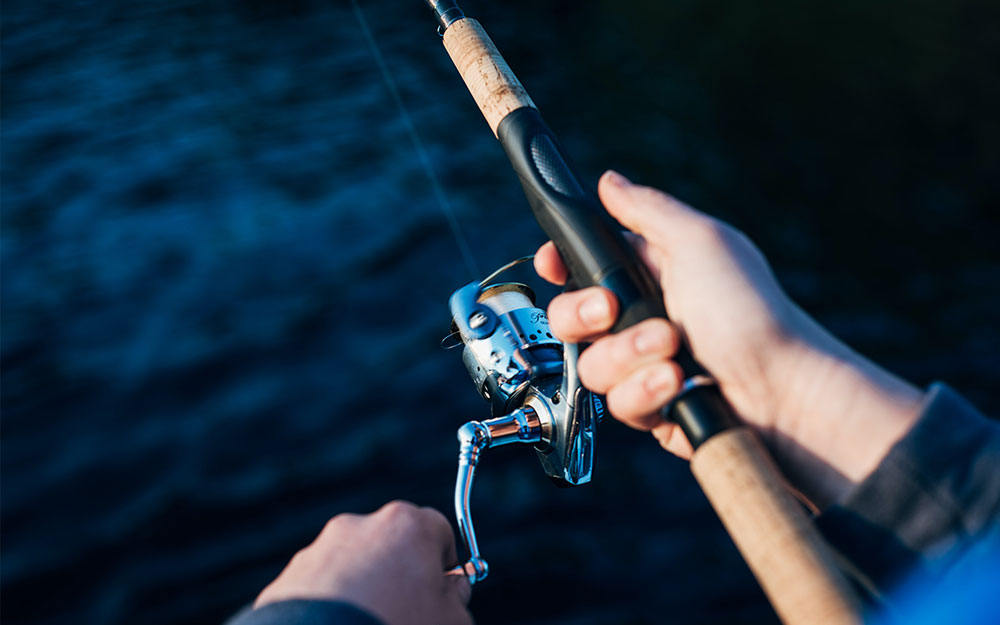An all-time favorite of seasoned outdoorsmen and women everywhere, fishing is a fantastic pastime. Fresh air, tranquil waters, peace, and quiet. What’s not to love? But to land your first catch, you’ll need to break down the basics—starting with understanding the different types of fishing reels. In 2020, fishing proved to be a popular, social distancing-friendly activity for nearly 55 million Americans. However, if you’re a first-time angler, you may be surprised to find that a good day on the water doesn’t just come down to what’s biting. Of the most important tools in a fisherman’s arsenal, the type of reel used is critical for a successful fishing trip. Below, we’ll take an in-depth look at the main types of fishing reels and what you need to know to reel ‘em in.
What Are the Different Types of Fishing Reels?
Every fisherman is unique, including their preference of reel. Fortunately, it’s a great big ocean and there’s plenty of wiggle room to discover what works best for you. Each type of reel comes with unique advantages and disadvantages. Some offer straightforward casting control, while others boost precision and durability over ease of use. To help you get started, we’ve categorized fishing reels into 4 distinct types (click to jump to the section that interests you most below): We’ll also be covering reels used in saltwater fishing. Although saltwater reels aren’t in a category of their own, they do feature modified or highly similar designs better suited for the rough and tumble of the open water. Let’s dive in!
1. Spincast Reel
Of the scores of anglers in 2020, 4.4 million of them were first-timers. If you’re also a newcomer, then consider the spincast for your first reel. Easily identifiable by its position atop the rod and a closed-faced design capped by a metal nose cone, two key features set spincasts apart from other reels. Firstly, a line release button. Located on the back of the reel, the button is operated by your thumb for more comfortable casting. Secondly, a drag adjustment toggle, usually found atop the reel or next to the handle. As the term implies, this toggle allows you to adjust resistance and how much “give” you’ll need, so feel free to experiment. To cast, just press the thumb button, swing, and release. That’s it! The line will cast in your desired direction and stop once you press the button again.
Pros of the Spincast Reel
The best thing about spincasts is that they’re easy to master. Thanks to their uncomplicated design and straightforward customization, the spin is a great choice for beginners and intermediate amateurs. Many veteran anglers keep a spincast or two in their staple. Spincasts are also relatively inexpensive. This makes them the perfect option for children and teenagers interested in fishing but without the prowess or fine motor skills for heavy-duty reels. Given the right model, a spincast may even be suitable for saltwater fishing. Just don’t expect to reel in a true monster of the sea!
Cons of the Spincast Reel
Like all reel types, the spincast comes with downsides. One notable disadvantage is their lack of durability. Depending on the quality of the model, a spincast may not last longer than a season. Water and debris gradually collect within the nose cone, wearing down the internal mechanisms prematurely. Likewise, spincast reels have limited casting accuracy and range. While this isn’t necessarily a major concern for beginners, it may become a handicap for anyone interested in a challenge.
2. Spinning Reel
For those of us looking to pick up a new hobby, the spinning reel is probably what you imagine when you think of fishing reels. Also known as an open-face reel, the spinning reel is beloved by beginners and pros alike. Sporting a slightly more complex design than the spincast, the reel itself is located beneath the rod. Meanwhile, the drag adjustment toggle can be found at the nose of the reel. Instead of a button, the spincast features a metal bail at the rear of the reel. Spinners are also fairly versatile. They may be used to cast or jig and are known for their durability in either case. Although somewhat tricky at first, casting with a spinning reel is easy to master. To cast, release the bail and use your index finger to squeeze the line against the rod. This will prevent unspooling. After which, swing your rod (overhead or to the side, whichever you prefer) and release the bail midway through the motion. Finally, aim your rod in your desired direction. Remember to reengage the bail after casting. Most models do this automatically but to prevent a tangle, pull the metal bail and reengage it by hand after the first cast lands.
Pros of Spinning Reels
The spinning reel’s durability is only matched by its efficiency. Given the right model and a little experience, they’re ideal for many kinds of fish, habitats, lures, and baits. To add, beginners and more seasoned anglers will have a relatively painless time casting thanks to the spinning reel’s flexibility. Once you’re familiar with the casting motion, you can take advantage of its increased pulling power, accuracy, and distance for trickier catches. Furthermore, spinning reels offer middle-ground price points. This offers a decent compromise for any angler looking for an affordable and sensible reel.
Cons of Spinning Reels
Due to the metal bail, spinning reels are easy to tangle. If you lack the experience, you might find yourself with what’s known as a bird’s nest (and a headache). This, and the casting technique, add to the spinning reel’s learning curve. Although relatively versatile, spinning reels are not ideal for heavier lures or lines. If you have big game fishing in mind, be sure to invest in a specially designed or modified spinning reel.
3. Baitcasting Reel
In your search for the perfect reel, you’ll likely notice many different types of baitcasting reels on the market. Powerful and precise; baitcasters are developed for many kinds of fishing. In order to meet complex needs, this type of reel sports an equally complex design better suited for experienced hobbyists and professionals. You can spot a baitcasting reel by its position atop the rod and the drag toggle next to the reel handle. Apart from its sturdy, semi-enclosed design, what makes the baitcasting reel truly unique is its customization options. To get the performance you need, you can modify the reel through the spool tension knob and braking system. These two components provide a greater range of control, allowing you to throw as far as you want while preventing the spool from turning too fast. As a result, casting requires an expert hand. To cast, press your thumb against the spool mid-throw. Given the right settings, instincts, and timing, you can land your bait in your desired direction with almost laser-point precision. Once the lure has landed, press a clip to lock the line place.
Pros of Baitcasting Reels
The baitcasting reel is arguably the most powerful reel type. Available in a variety of sizes, baitcasters can handle both heavy and lightweight lines, making them highly versatile. They’re ideal for any number of habitats or conditions, fresh or saltwater. Accuracy and efficiency are further enhanced by its intricate design and customization options not found on other reels.
Cons of Baitcasting Reels
If you’re a newcomer, be aware that baitcasters are difficult to master. Different line weights require reconfigured settings, making casting nowhere near as straightforward as with other reels. Even experienced anglers will have to overcome a learning curve before they land their first successful catch. Finally, pay attention to the price range. Due to their more advanced features, even small baitcasters tend to be pricier than most reels.
4. Fly Fishing Reel
A sport in its own right, fly fishing requires a stronger rod and reel than other forms of fishing. To achieve the deft precision fly fishing is known for, fly casting relies on the weight of the fishing line rather than the lure, known as the fly. The fly is essentially weightless. Meanwhile, the line is thicker than your everyday fishing line and requires a specialized reel to cast correctly. Similar to spincasters, fly reels are situated beneath the rod. Its most notable feature is a single, enlarged spool designed to rotate around a center pin. As the name implies, fly reels are similar to centerpin reels, a traditional reel that has since fallen out of style. However, what sets fly reels apart from the centerpin—and indeed, other types of reels—is the casting motion. To cast, start with your rod lowered, the line already unspooled. Swing backward then pause. As the line unfurls behind you, swing it forward in a smooth, straight motion, coming to an abrupt but gentle stop with a loose hold on the line. After which, tip your rod downward to land the fly. Although this sounds simple, fly casting is quite tricky! You’ll need fine control of your motor skills to cast like a master fly fisher.
Pros of Fly Reels
When cast correctly, this type of reel allows for precision throws across greater distances than some spinners and baitcasters are capable of. Fly reels are also optimized for artificial flies, a form of bait that imitates insects many fish feed on. To add, casting is done silently. After a successful throw, the fly lands gently atop the water without frightening the fish. Meanwhile, spinners and baitcasters always make a splash. Fly reels also boast a higher rate of retrieval. Due to their enlarged spool size, anglers get more bang for their buck with faster line retrieval than with other types of reels.
Cons of Fly Reels
Fly fishing is essentially in a league of its own, making fly reels unsuitable for certain kinds of catches, such as deep-sea fish. As it’s unlikely you’ll interchange your fly reel for a spinner or baitcaster, you’ll need a second type of reel if you’re interested in other catches. Quality fly reels also sit at higher price points than other reels.
Types of Saltwater Fishing Reels
Although quite different from freshwater fishing, you can use just about any type of reel for saltwater fishing, including fly reels. That said, be mindful of maintenance! The briny sea wears down fishing rods and reels faster than in freshwater. Furthermore, reels designed to catch big game such as marlin and sailfish are not interchangeable with your everyday spinner. Before you head out onto open water, let’s take a quick run-through of the types of reels used in saltwater fishing and their enhanced designs.
Offshore Reels
To reel in the toughest catches and overcome the harsh conditions of the sea, an offshore reel is a necessary investment for expert maritime anglers. Essentially super-sized spinning reels, offshore reels are crafted for heavy-duty catches. For this reason, they’re not synonymous with typical spinning reels and therefore unsuitable for beginners. In addition to their power, offshore reels are also more durable than normal spinning reels. They can take a beating from the strongest catches the sea has to offer—all while withstanding the corrosive effects of sand, salt, and wind, making it no surprise that offshore reels are some of the priciest reels available.
Surfcasting Reels
When selecting a saltwater reel, you’ll find that surfcasting reels tend to be studier spinning reels or modified baitcasters, crafted with a larger spool for saltwater fishing. In either case, this type of reel is optimized for long-distance casting. When utilized correctly, surfcasting reels can achieve record-breaking distances. Like offshore reels, a quality surfcasting reel can also handle heavy lines with ease. For the best results, they should be paired with a surfcasting rod and maintained regularly.
Trolling Reels
Also known as a conventional reel, the trolling reel can be likened to baitcasters in appearance, but their key difference is in their usage. Trolling reels are strapped to the back of boats, then trailed or “trolled” along until a fish is lured. As with the aforementioned reels, the trolling reel is ideal for heavier fish, both fresh and saltwater. Although they have a fairly simple design, they’re not ideal for beginners. A strong drag system and heavier line capacity require expert knowledge to cast effectively.
What Is the Best Type of Fishing Reel?
After weighing the pros and cons, you may be still wondering which type of fishing reel is right for you. Different types of reels may fulfill multiple purposes, whereas some are better suited for specific situations, such as in the case of big game fish. Furthermore, not all models (or anglers) are created equal. What works for someone else won’t necessarily work for you—and that’s alright! To find the best reel for you, research the type of fishing you’re interested in, including the ideal line strength and capacity needed to make a catch. If you’re still unsure, start with the basics. We recommend a spinning reel or spincast reel due to their affordability and beginner-friendly casting.
A Final Word On Fishing Reels
In a perfect world, we’d have one reel to reel them all. Sadly, this isn’t the case. For a more worldly fishing experience, many skilled anglers use multiple rods and reels to suit their needs. However, this isn’t necessary for a beginner, much less an expert! As any fisherman will tell you, what matters is your experience. Sure, understanding the different types of fishing reels and how to use them takes a little time—but once you’ve narrowed where and how you’d like to fish, picking the right reel becomes a fairly simple task. Got tips every newcomer should know about fishing reels? Share your insider knowledge and leave a comment down below!

